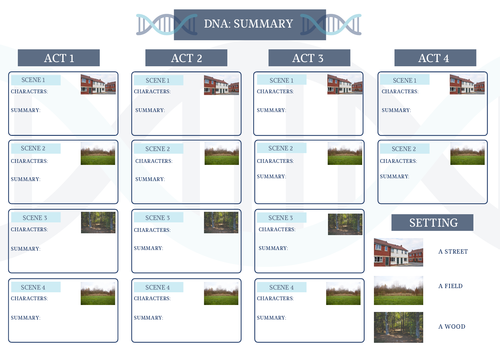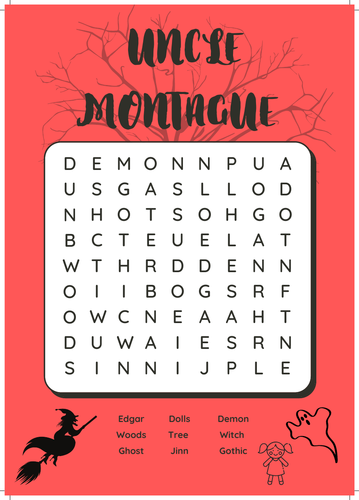647Uploads
224k+Views
55k+Downloads
English language arts

Skimming & Scanning English Reading Comprehension Lesson. Functional Skills / KS3/ KS4 PPT & 2 Tasks
Skimming & Scanning Lesson.
Includes a 13 page PPT on the differences between skimming and scanning techniques. Throughout the PPT, learners are given tips on how to effectively skim and scan a piece of text. Examples and questions are featured on the PPT throughout.
Also included:
1 task booklet with a source document. There are nine questions, based on the text, which the students are to answer. Answers are included so that learners can self mark.
1 task booklet with a source document included. Learners are to use the source document to make their own skimming & scanning question sheet. Students will then get a peer to answer the questions that they have created.
This would suit High Level E3 and L1 learners.

English Functional Skills Reading Revision Guide Level 1
This is an English Functional Skills reading revision guide that has been written for learners who will be taking the level 1 reading assessment.
The guide includes an overview of all the information they will need to know in order to pass this assessment ( based on the NCFE level 1 assessment).
The fifteen page revision guide includes:
How to skim and scan a piece a text
The purpose of a text
Layout features of a text
Facts and opinions
Tone and style
Main point of a text
Summary of a text
Each section contains information on each topic and gives examples and tips. This is given to my learners before their assessments and has helped them a lot.

Functional Skills English Reading Powerpoint Pack Entry 3 - Level 1
A PowerPoint that can be used in the delivery of Functional Skills Reading. This PowerPoint contains 94 slides and contains all the information needed to pass the Reading Functional Skills Assessment at Entry Level 3 to Level 1 (based on the NCFE awarding body criteria).
PowerPoint overview:
Understanding different types of text
How to find information quickly - skimming and scanning
The use of presentational devices and the layout of a text
Distinguishing facts and opinions
Finding the main point of a text
Summarising a text
Functional Skills reading assessment practice questions

KS3 Uncle Montague's Tales of Terror Reading / Writing Task Booklet: 22 Tasks. Chapters 1-11
This is a 24 page task booklet based on the book: Uncle Montague’s Tales of Terror. I created this booklet for my KS3 English reading class.
The booklet contains 22 different tasks that pupils can complete as they read through the book. There are tasks for each of the ten chapters.
Tasks include:
Description writing ( articles, reviews etc…)
Creative writing
Reading comprehension
Rich Text Format and Word Document files attached for compatibility.

ENGLISH FUNCTIONAL SKILLS READING COMPREHENSION 6 PAGE L1 & L2 TASK BOOKLET/ PRACTICE EXAM & ANSWERS
This is an 6 page PDF booklet that contains questions may find in their L1 & L2 reading exam.
Topic: Fur Farming
11 Questions including:
Skimming and Scanning
Fact or Opinion
True or False
Language Techniques
Phrases
Learners will be given a source document and will answer questions based on this documents. All answers are provided so that learners can self-mark.
Bundle

FUNCTIONAL SKILLS ENGLISH BUNDLE LEVEL 1 - 95 SLIDE POWERPOINT AND 18 TASKS ( 6 BOOKLETS) PLUS REVISION GUIDE
BUNDLE INCLUDES:
This is a 95 page PowerPoint that can be used in the delivery of Functional Skills Writing Level 1. The PPT gives learners an overview of the following:
Introduction to the Writing Module
Text, Audience, Purpose
Planning & Drafting
Purpose of a Text
How to Write a Formal Letter
How to Write an Email
How to Write an Article
How to Write a Review
How to Write a Report
How to Write a Blog
How to Write a Leaflet
There is a step-by-step guide of how to structure and format each text and examples are given throughout the slides.
Following this, practice exam questions (that have been created by myself) are then shown on screen. These questions are based on each text type. There are 8 writing tasks to complete in total.
PLUS:
6 X Booklets containing 3 writing tasks each: articles, emails, reports, reviews, blogs and leaflets.
1 Level 1 / 2 Writing Revision Guide

The Outsiders Quiz - English Literature Novel 25 Page PPT and Answers
This quiz will test your learner’s knowledge of the novel. Once they have read the entire novel, get them to grab their white boards and try to answer each multiple choice question. There are 23 questions for learners to answer which are from chapter 1 to chapter 12 of the novel.

ENGLISH FUNCTIONAL SKILLS READING COMPREHENSION 8 PAGE L1 & L2 TASK BOOKLET/PRACTICE EXAM & ANSWERS
This is an 8 page PDF booklet that contains 3 tasks:
Skimming and Scanning X 8 Questions
Fact or Opinion
Layout features
Learners will be given a source document and will answer questions based on this documents. All answers are provided so that learners can self-mark.

DNA by Dennis Kelly Character Traits Worksheet and Extension Task. GCSE English Literature
An A3 worksheet which gives the learner a list of character traits and asks them which characters in the play possess these traits.
There is also an extension task to complete and the learner will be asked to use evidence from the text to support their choices.

DNA by Dennis Kelly Act & Scene Plot Summary A3 Revision Sheet. English Literature. GCSE Play.
An A3 PDF revision resource.
Once your learners have finished reading Dennis Kelly’s play, get them to revise their knowledge and write a summary of each scene.
Great for GCSE revision.

GCSE Poetry Anthology Themes Power and Conflict Revision Cards / Display / Task. English Literature
Ideal for KS4 students to help them with remembering which poems fall under which key theme.
Uses for this document
Get your learners to pick one of the eight key themes. For each poem under that theme, they have to locate a quote from that poem. The quote should relate to the theme.
Example:
Power of Nature - Ozymandias -“Nothing beside remains. Round the decay
Of that colossal Wreck…”
Use as posters for a wall / visual display
Print double sided, laminate and turn into a revision book
SPELLING MISTAKE RECTIFIED - 16/02/2024

How to Write a Leaflet PPT: GCSE KS3 & KS4 / Functional Skills English. 16 page PPT Lesson and Tasks
This is a 16 page PPT on how to write a leaflet.
The PPT includes:
What is a leaflet?
What do I include in a leaflet?
Step-by-Step leaflet guide ( title, heading, subtitle, subheadings, paragraphs and conclusion).
Examples throughout PPT
Layout of a leaflet
3 practice question tasks - Get students to research the topic and then get them to write a leaflet based on this topic
Bundle

Functional Skills English Letter Writing Task & Writing Formatting Planning Template E3/L1
Letter Writing Task.
The learner has a letter writing task to complete and can plan and format their letter correctly by using the included letter writing template.

Figurative Language Devices: Functional Skills English L1 & L2. 25 page PPT Lesson and Tasks
This is a 25 page PPT on figurative language devices. A task sheet is also attached.
The PPT includes:
What is a figurative language
Examples of figurative language and the meaning
Figurative language class quiz. Learners will answer questions on their whiteboards. Answers will appear on PPT.
Example of an exam question and source text
Figurative language task - Learners must find the nine different figurative language techniques in the text.
Colour coded answers to the task sheet on screen

Day of the Dead English Comprehension Reading Activity Worksheet KS3/ Functional Skills. Halloween
An English Reading Comprehension Activity.
This resource gives the learner an overview of the celebration: Day of the Dead.
Learners will read the text and then answer ten skimming and scanning questions based on this document. There is also an extension question.
Answers are provided so that learners can self mark.

Effect on the Reader - English Language Revision Sheet / Visual Mind Map. Language / Structure
This sheet can be used as a guide to help students identify what effect certain language or structural features can have on the reader. Can be used as a visual revision resource.
*To ensure this document prints correctly with the black border select ‘print to printable area’ option in print settings.

English Reading Comprehension ( Skimming & Scanning Skills): Singers
An English reading comprehension task that will improve learners skimming and scanning skills.

Poetry Anthology Context Revision 'Quiz' Knowledge GCSE Power & Conflict
This PPT was used as part of a revision session.
I displayed a piece of context on the interactive white board from the PPT. Each piece related to one of the fifteen poems in the anthology. We read through the slide as a class and they were then asked which poem the information related to. They would then write the contextual information in their exercise books to be used for revision purposes.
The information is off free resources I found during Google searches. I then compiled it into this PPT.

Uncle Montague's Tales of Terror Lesson Starter: Word Search
An ideal lesson starter. Who can complete the word search in the quickest time?




















